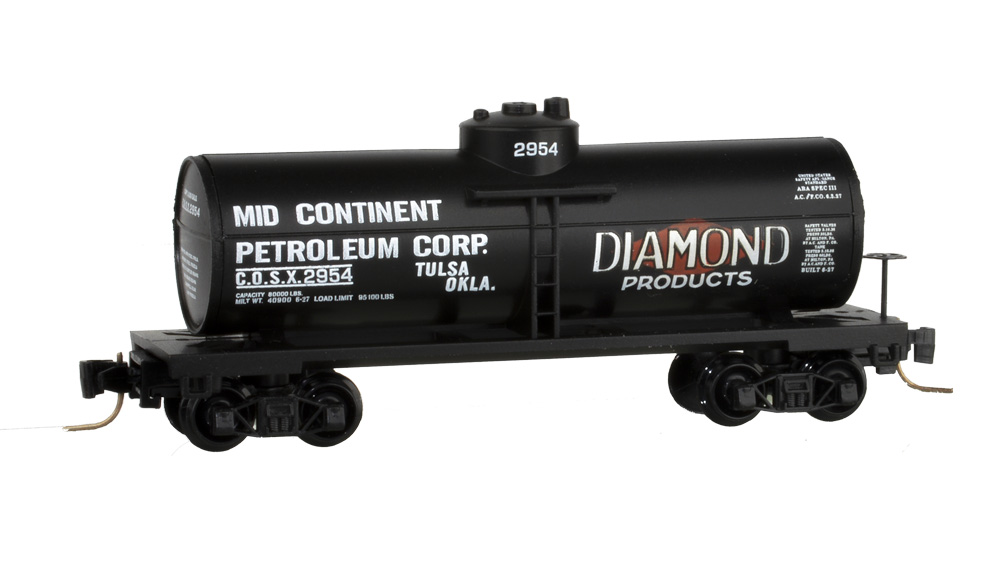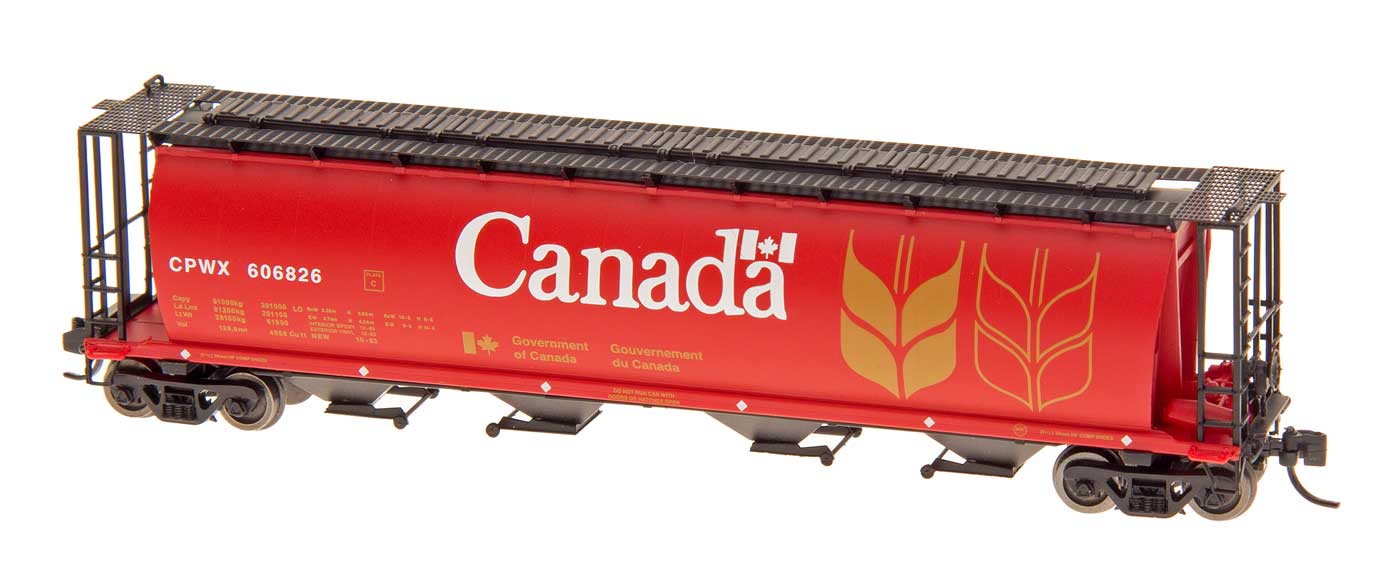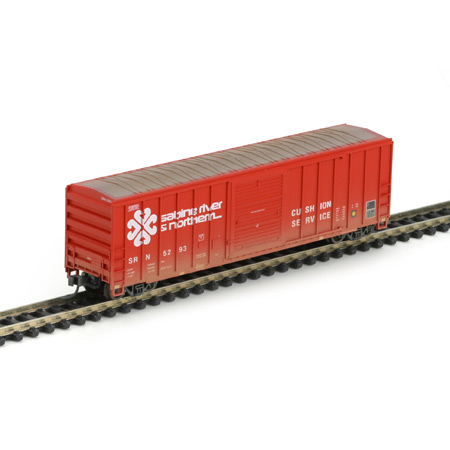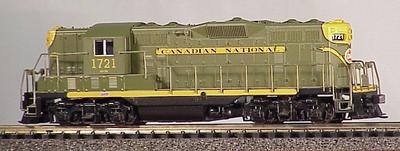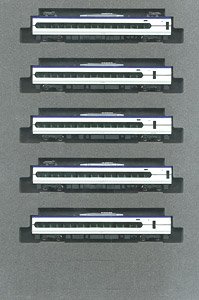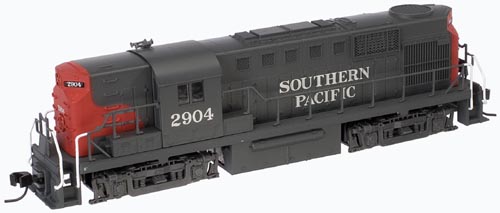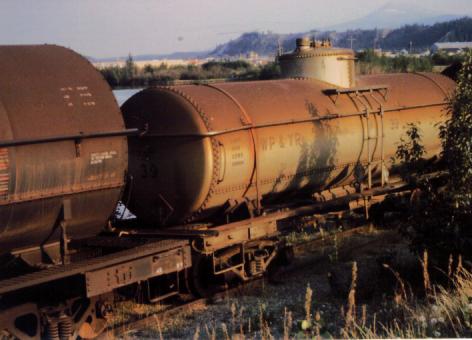Prototype History: Single Dome tank cars are a railroad staple. They have been around since the first half of the 20th century. This length car can handle about 10,000 gallons. These railcars carry a wide array of commodities, including liquid fertilizers, chemicals, fuel oils and asphalt, and food-grade oils. Tank cars can be pressurized or non-pressurized, insulated or non-insulated. Single dome cars carry only a single commodity at once. Food-service tank cars may be lined with stainless steel, glass, or plastic. Tank cars carrying dangerous goods are generally made of different types of steel, depending on the intended cargo and operating pressure. They may also be lined with rubber or coated with specialized coatings for tank protection or product purity purpose. The tank heads are also stronger to prevent ruptures during accidents.
One common version is the ACF Type 27 jacketed tank car with expansion dome which was in common use by many railroads and oil companies.
One common version is the ACF Type 27 jacketed tank car with expansion dome which was in common use by many railroads and oil companies.
Road Name History: The history of Mid-Continent is somewhat fuzzy, due to the extreme complexity of the businesses involved in its formation and the limited availability of records from this period.
It all started with Josh Cosden of Tulsa, Oklahoma in the mid teens. Mr. Cosden, a prominent businessman and local celebrity in Tulsa, is briefly described in this article from the Harvard Business School:
Known as the "prince of petroleum," Cosden is credited with establishing Oklahoma as a major oil producing state. Starting with a small parcel of land, he built a $35 million oil business in ten short years. Through his oil discoveries and exploration, he almost single-handedly quadrupled the population of Tulsa at the turn of the century.
Mr. Cosden established Cosden Oil & Gas Co., building its new headquarters building (called the Mid-Continent building) in 1916. Mid-Continent Petroleum Corporation was organized as Cosden & Company, a Delaware corporation, in 1917. Various Cosden holdings were re-incorporated as Mid-Continent Petroleum during a forceful restructuring that took place in 1925. It was at this time that the Mid-Continent building in Tulsa officially became the headquarters of the Mid-Continent Petroleum Corporation.
The company's stations began selling gasoline at stations under the Diamond name at some point in the early to mid- 1920s. The stations sold motor oil, kerosene, Diamond gasoline, and an anti-knock version known as Nevr-Nox. This antiknock compound must have been something other than Ethyl at the beginning, because it was touted as being ?non-poisonous? on some versions of signs and globes from the 1920s through 1933.
It all started with Josh Cosden of Tulsa, Oklahoma in the mid teens. Mr. Cosden, a prominent businessman and local celebrity in Tulsa, is briefly described in this article from the Harvard Business School:
Known as the "prince of petroleum," Cosden is credited with establishing Oklahoma as a major oil producing state. Starting with a small parcel of land, he built a $35 million oil business in ten short years. Through his oil discoveries and exploration, he almost single-handedly quadrupled the population of Tulsa at the turn of the century.
Mr. Cosden established Cosden Oil & Gas Co., building its new headquarters building (called the Mid-Continent building) in 1916. Mid-Continent Petroleum Corporation was organized as Cosden & Company, a Delaware corporation, in 1917. Various Cosden holdings were re-incorporated as Mid-Continent Petroleum during a forceful restructuring that took place in 1925. It was at this time that the Mid-Continent building in Tulsa officially became the headquarters of the Mid-Continent Petroleum Corporation.
The company's stations began selling gasoline at stations under the Diamond name at some point in the early to mid- 1920s. The stations sold motor oil, kerosene, Diamond gasoline, and an anti-knock version known as Nevr-Nox. This antiknock compound must have been something other than Ethyl at the beginning, because it was touted as being ?non-poisonous? on some versions of signs and globes from the 1920s through 1933.
Brand/Importer Information: Micro-Trains Line split off from Kadee Quality Products in 1990. Kadee Quality Products originally got involved in N-Scale by producing a scaled-down version of their successful HO Magne-Matic knuckle coupler system. This coupler was superior to the ubiquitous 'Rapido' style coupler due to two primary factors: superior realistic appearance and the ability to automatically uncouple when stopped over a magnet embedded in a section of track. The success of these couplers in N-Scale quickly translated to the production of trucks, wheels and in 1972 a release of ready-to-run box cars.
Micro-Trains Line Co. split off from Kadee in 1990 to form a completely independent company. For this reason, products from this company can appear with labels from both enterprises. Due to the nature of production idiosyncrasies and various random factors, the rolling stock from Micro-Trains can have all sorts of interesting variations in both their packaging as well as the products themselves. When acquiring an MTL product it is very important to understand these important production variations that can greatly enhance (or decrease) the value of your purchase.
Micro-Trains Line Co. split off from Kadee in 1990 to form a completely independent company. For this reason, products from this company can appear with labels from both enterprises. Due to the nature of production idiosyncrasies and various random factors, the rolling stock from Micro-Trains can have all sorts of interesting variations in both their packaging as well as the products themselves. When acquiring an MTL product it is very important to understand these important production variations that can greatly enhance (or decrease) the value of your purchase.
Item created by: petecduffy on 2019-07-24 12:06:41. Last edited by petecduffy on 2019-07-24 12:10:35
If you see errors or missing data in this entry, please feel free to log in and edit it. Anyone with a Gmail account can log in instantly.
If you see errors or missing data in this entry, please feel free to log in and edit it. Anyone with a Gmail account can log in instantly.


